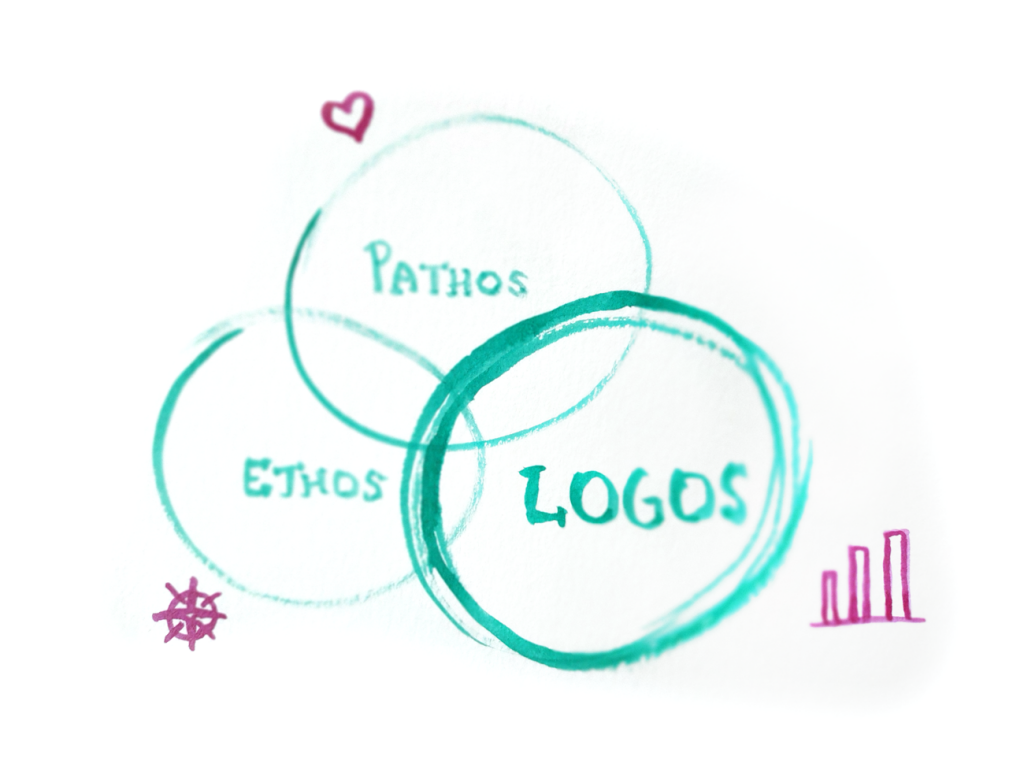Logic + Creativity = A Logo

The best part of being a designer is that I get to work with material from a variety of industries and perspectives. One recent piece was part of sales training material for a pharmaceutical company, which looked at effective communication in the work culture.
One of the infographics outlined the role of the famous triptych: Pathos, Ethos and Logos. Here is a quick outline:
- Pathos, meaning ‘pity’, inspires an emotional response and its role is to get your audience to empathize or feel.
- Ethos, or ‘ethics’, establishes personal credentials and earns your audience’s trust.
- Logos, or ‘logic’, argues based on reason and fact, and provokes your audience to think.
Where am I going with this and what does this have to do with branding? Great question, so glad you asked.
Logos…logos…logos…where have we seen that word around? Branding, graphics, symbols! And why is ‘logo’ used to label a visual, creative graphic that represents a company brand?
Digging deeper into the etymology, I find language marrying reason and creative communication:
Logo, denoting a graphic symbol, is a shortened form of logotype, which comes from Greek, logo– ‘word’ and type– ‘symbol’. As with all Greek and ancient words, there are multiple layers to one word: log-, word-forming element meaning “speech, word,” also “reason,” from Greek logos “word, discourse; reason,”
If you’re still with me, congratulations, I’m getting to the point.
Logos as graphic symbols have long been synonymous with creativity, the arts, and what hardcore sales folk might even call unecessary pretty things. I will agree, on their own, they are totally meaningless. However, their names reveal an underbelly of reason and logic in which the graphic element is ultimately rooted. The logo is in fact the fact-based argument for what the brand stands for (Ethos) and how they impact people (Pathos).
How do graphic logos do this?
By summarizing the brand or organization into a bite-sized visual snapshot that explains to the impatient viewer: “why us?”. It often includes the name (who they are), an icon (what they do) with a particular style (their tone/approach). This is like the eyeball version of a 6-second elevator pitch.
Zooming out, successful brand communication adopts all three – Ethos, Pathos, and Logos – and I just find it wonderful that the Logos (reason and logic) is expressed through the Logos (an organization’s defining symbol). Bottom line: Logos are a perfect union of logic and creativity.

